Outsourcing to Czechia

How much does it cost to hire developers in Czechia?
Dec 2nd 25 - by Devico Team
Find out how much it costs to hire software developers in Czechia in 2025. Compare hourly rates, roles, and factors that impact pricing.
Hire
Hire by role
Hire Front-end developers
Hire Back-end developers
Hire Full-stack developers
Hire Android developers
Hire iOS developers
Hire Mobile developers
Hire AI engineers
Hire ML engineers
Hire Automation QA engineers
Hire Blockchain developers
Hire Data engineers
Hire Cloud engineers
Hire by skill
Hire JavaScript developers
Hire TypeScript developers
Hire Ruby on Rails developers
Hire React Native developers
Hire Flutter developers
Hire Golang developers
Hire React.js developers
Hire Python developers
Hire PHP developers
Hire .NET developers
Hire Java developers
Hire Laravel developers

Outsourcing
December 05, 2024 - by Devico Team
Summarize with:
Bringing an outsourced team on board can feel like a leap into the unknown. You may worry about miscommunication, misaligned goals, or simply the difficulty of integrating a new team into your existing workflow. But what if the transition could be smoother than you think?
An effective onboarding process for outsourced employees is the foundation of success, turning potential challenges into a smooth transition and faster productivity. In fact, companies with strong onboarding processes improve new hire retention by 82% and productivity by over 70%.
In this article, we'll provide practical tips to ensure a smooth onboarding process and maximize the benefits of outsourcing partnership.
The first outsourced onboarding experience is like a first date; it sets the mood for the whole relationship and determines how well outsourced employees adjust. If the onboarding goes well, it can really boost the success of an outsourced team. It’s a chance to make a good impression, build trust, and make sure everyone is on the same page about what’s expected and the goals.
Team integration
Slow and challenging adaptation to company culture and processes, leading to potential misunderstandings.
Role clarity
Clear understanding of roles, responsibilities, and expectations from the start.
Confusion about roles and responsibilities, leading to errors and duplicated efforts.
Productivity
Faster ramp-up time; team members reach full productivity sooner.
Delayed productivity as team members spend time figuring out processes and expectations.
Communication
Established communication channels and protocols that foster effective collaboration and feedback.
Lack of clear communication channels, leading to miscommunication and information silos.
Employee engagement
Higher engagement levels due to a structured introduction and clear path for growth and contribution.
Lower engagement and morale due to feeling disconnected or undervalued, potentially leading to higher turnover.
Knowledge transfer
Efficient transfer of essential knowledge and skills through structured training programs.
Loss of critical knowledge due to lack of formal training and inconsistent information sharing.
Team cohesion
Strong sense of belonging and teamwork, fostered by early and continuous team-building activities.
Weak team cohesion, resulting in feelings of isolation and difficulty in building trust among team members.
Adaptability
Greater adaptability to changes and challenges due to a solid foundation and understanding of company dynamics.
Difficulty adapting to changes, resulting in resistance and slower response to new challenges or directives.
Performance monitoring
Clear metrics and KPIs established early, enabling continuous performance evaluation and improvement.
Lack of performance benchmarks and feedback mechanisms, making it hard to assess progress and address issues.
Retention rates
Higher retention rates as team members feel valued, supported, and aligned with company goals.
Increased turnover due to dissatisfaction, misalignment, and lack of support, leading to higher recruitment and training costs.
Effective onboarding of outsourced teams doesn’t start on their first day, it starts long before they officially join your organization. Preparation is key to ensuring a smooth transition and setting the stage for success, especially when onboarding outsourced employees who need clarity and alignment from day one. Here’s a guide to help you thoroughly prepare for onboarding outsourced teams:
Before you even begin the onboarding process, it’s essential to have a clear understanding of what you want to achieve. Define clear objectives and goals for the outsourced team during the onboarding process to avoid confusion later.
Action steps:
Set specific, measurable goals for the outsourced team.
Align these goals with broader project objectives and company strategy.
Document these goals clearly to share with the team during onboarding.
Outsourcing contracts: What do you need know
A well-structured onboarding outsourcing plan outlines the entire process, giving outsourced employees a clear path to follow. This plan should cover all aspects of the onboarding process, from initial introductions to role-specific training.
Action steps:
Create an onboarding schedule with key dates and deliverables.
Include orientation, training, and integration activities.
Assign responsibilities for each onboarding step.
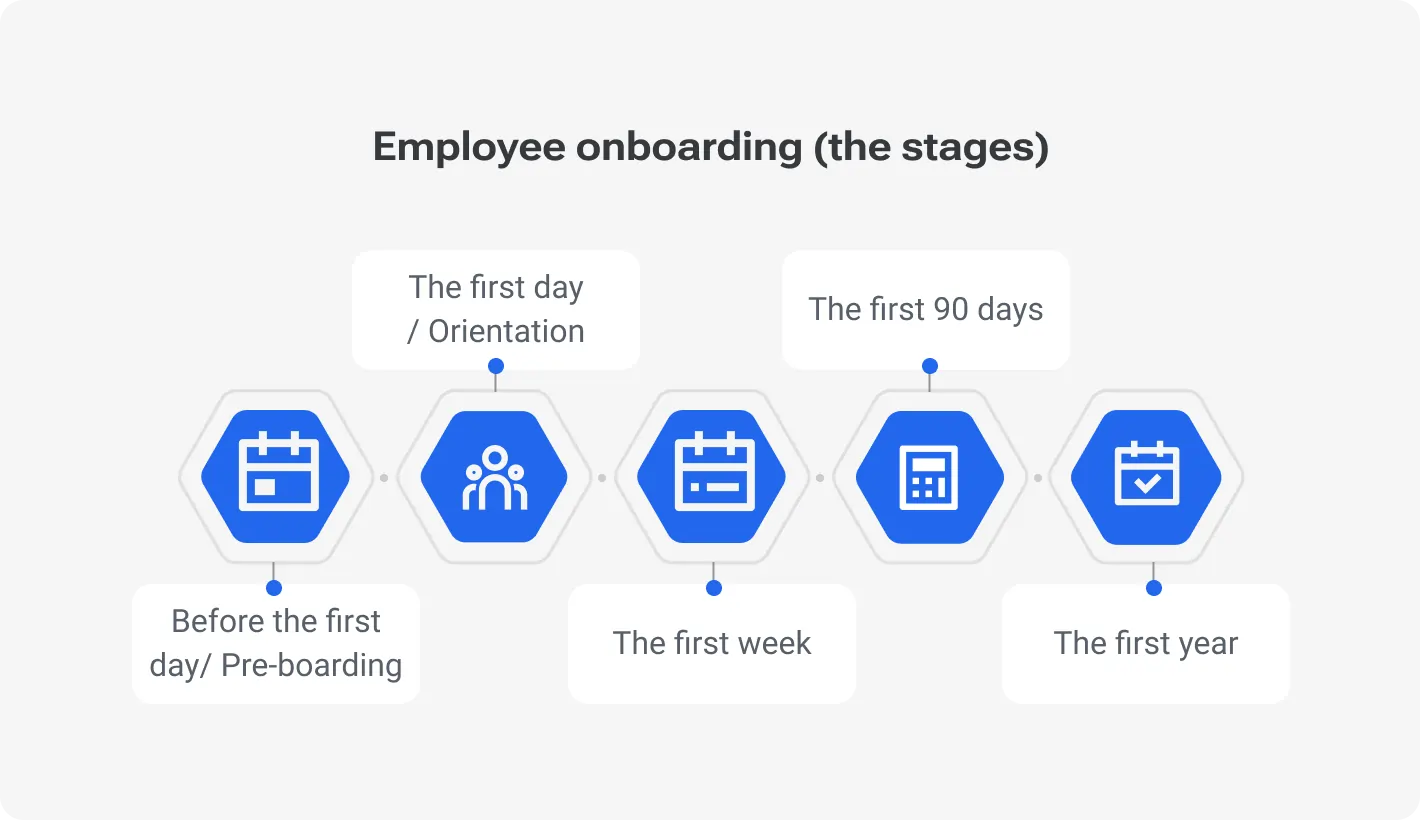
Gather all the necessary documentation and resources that the outsourced team will need, this step is the backbone of any successful onboarding outsourcing strategy. This includes access to systems, software, and any company-specific tools they will be using. Proper preparation ensures that the team can start working efficiently without delays.
Action steps:
Update the onboarding manual with company info and processes.
Set up accounts and permissions before the start date.
Prepare training materials (guides, FAQs, tutorials).
Effective communication is crucial for successful outsourced onboarding, ensuring outsourced employees stay aligned with in-house teams. Establish clear communication channels and protocols to facilitate smooth interactions between your in-house team and the outsourced team.
Action steps:
Choose communication tools that will be used for regular updates, meetings, and collaboration (e.g., Slack, Microsoft Teams).
Define communication protocols, including how often meetings will be held and who the points of contact will be.
Schedule regular check-ins to monitor progress and address any issues promptly.
Instant messaging
Slack, Teams, Discord
Real-time communication and collaboration
Video conferencing
Zoom, Google Meet, Microsoft Teams
Virtual meetings and presentations
Project management
Asana, Trello, Jira
Task management, tracking, and collaboration
File sharing
Google Drive, Dropbox, OneDrive
Sharing documents, files, and resources
Integrating an outsourced team into your company’s culture and organizational structure is a critical aspect of the onboarding process, preventing friction between in-house and outsourced employees. This helps the team understand your company’s values, norms, and working style, fostering a better working relationship.
Action steps:
Create a cultural orientation on company values and culture.
Introduce key team members and departments.
Share company practices like meeting protocols and reporting structures.
The outsourced team needs access to the same tools and technology that your in-house team uses to ensure they can perform their tasks effectively. Prepare these tools and provide any necessary training on how to use them.
Action steps:
Grant access to all necessary tools and systems.
Provide training on these tools.
Test functionality before the team starts.
Only 39% of workers felt they got enough support during remote onboarding, while 18% got none. A strong onboarding outsourcing approach includes mechanisms for ongoing support and feedback, ensuring outsourced employees don’t feel isolated. This helps address any challenges the team might face and ensures they are continuously improving and aligning with your expectations.
Action steps:
Set up a feedback system for raising issues or concerns.
Schedule regular feedback sessions to review progress and challenges.
Offer resources and support to resolve onboarding problems.
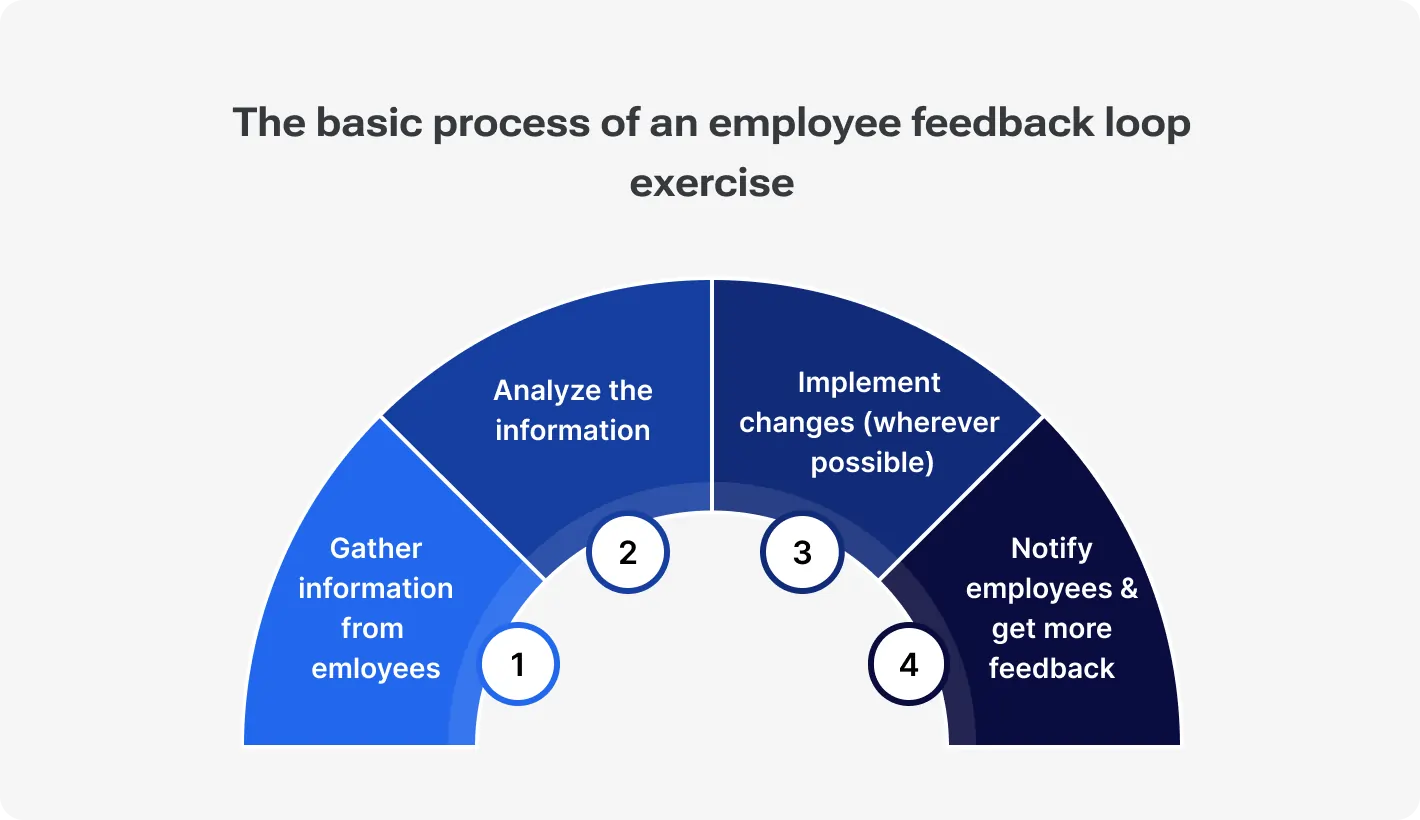
Ensure that all legal and compliance requirements are met when onboarding an outsourced team. This includes contracts, data security, and adherence to local regulations.
Action steps:
Finalize contracts covering confidentiality, data protection, and other key terms.
Ensure compliance with relevant legal and regulatory requirements, including labor and data protection laws.
Provide industry-specific training on compliance issues.
Once onboarding preparations are complete, the focus shifts to smoothly integrating the outsourced team into your organization. This includes encouraging collaboration, aligning processes, and building strong relationships. Here are key onboarding strategies to ensure a smooth transition for outsourced teams:
How to manage an outsourced development team effectively
Build strong relationships early. Organize virtual team-building sessions, pair in-house and outsourced teams for projects, and hold introductory meetings to ensure smooth collaboration and understanding.
Team building activities are key to outsourced onboarding, helping outsourced employees build trust with in-house staff. Here are some effective activities to enhance team cohesion and collaboration:
Two truths and a lie: Each team member shares three statements about themselves — two true and one false. Others must guess which statement is the lie, sparking conversation and laughter.
Personal fun facts: Team members share an interesting or little-known fact about themselves. This can lead to deeper conversations and discoveries about shared interests.
Photo sharing: Ask team members to share a photo that represents something meaningful to them — whether it’s a hobby, a pet, or a favorite travel destination. This helps to build rapport and humanize virtual interactions.
Culture presentation: Team members from different regions give short presentations about their culture, including customs, traditions, and even some unique business practices.
Virtual potluck: Organize a virtual potluck where team members prepare or share a dish that is unique to their culture. It’s a fun way to share personal stories and build stronger connections.
Language learning sessions: Conduct basic language sessions where team members learn common phrases or greetings from each other’s languages. It promotes cultural appreciation and makes communication more engaging.
An outsourced team must seamlessly integrate into existing processes and workflows to avoid friction and ensure efficient operations. This involves clearly defining how tasks are handled, who is responsible for what, and what the approval processes are.
Action steps:
Map out existing workflows: Visualize the steps, roles, and responsibilities involved in common processes.
Define process ownership: Clearly outline who is responsible for each part of the workflow, from the outsourced team to in-house members.
Establish process documentation: Create and share comprehensive guides and flowcharts that describe processes in detail, ensuring transparency and understanding.
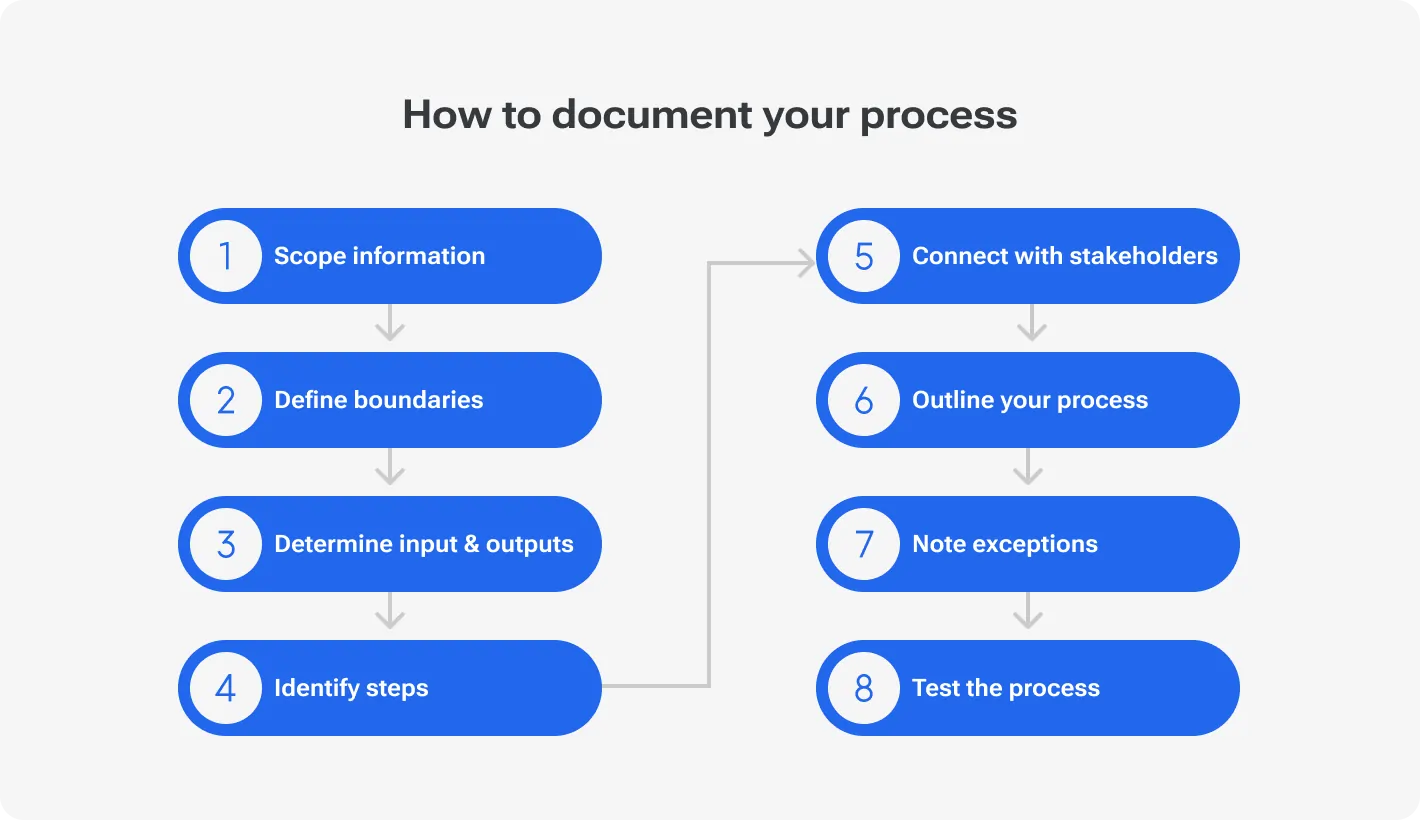
Clear reporting and performance management systems are crucial for maintaining accountability and measuring success. It ensures that both the in-house and outsourced teams are aligned with the company's goals and expectations.
Action steps:
1. Define performance metrics and KPIs: Establish clear key performance indicators (KPIs) and metrics to assess both individual and team performance.
Task completion rate
% of tasks completed on time
Measures productivity and ability to meet deadlines
Quality of work
Number of errors or rework required
Monitors the standard and accuracy of deliverables
Turnaround time
Average time to complete tasks
Tracks speed and responsiveness
Team utilization rate
% of time spent on productive work
Assesses resource efficiency and workload balance
Collaboration effectiveness
Quality and frequency of cross-team communication
Evaluates teamwork and alignment
Client satisfaction score
Feedback from stakeholders or clients on performance
Gauges overall satisfaction with output and service
Error resolution time
Time taken to resolve errors or issues
Measures problem-solving efficiency
2. Regular performance reviews: Conduct consistent performance reviews to provide feedback, recognize achievements, and identify areas for improvement.
3. Encourage a feedback culture: Implement a feedback loop where both in-house and outsourced teams can provide constructive feedback to one another.
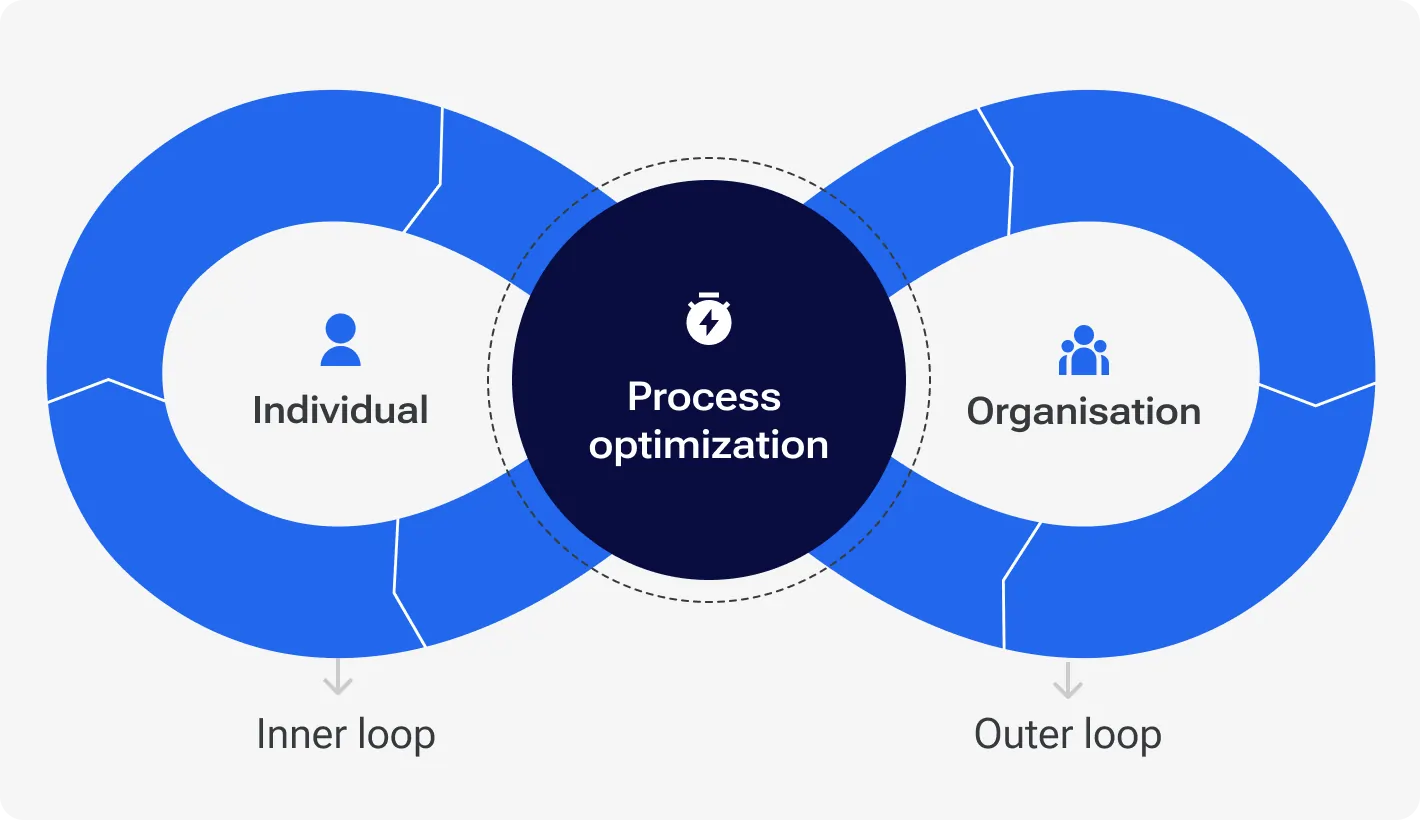
Effective onboarding is essential for integrating outsourced teams smoothly and ensuring they are productive from day one. Below is a comprehensive onboarding checklist to guide you through the process.
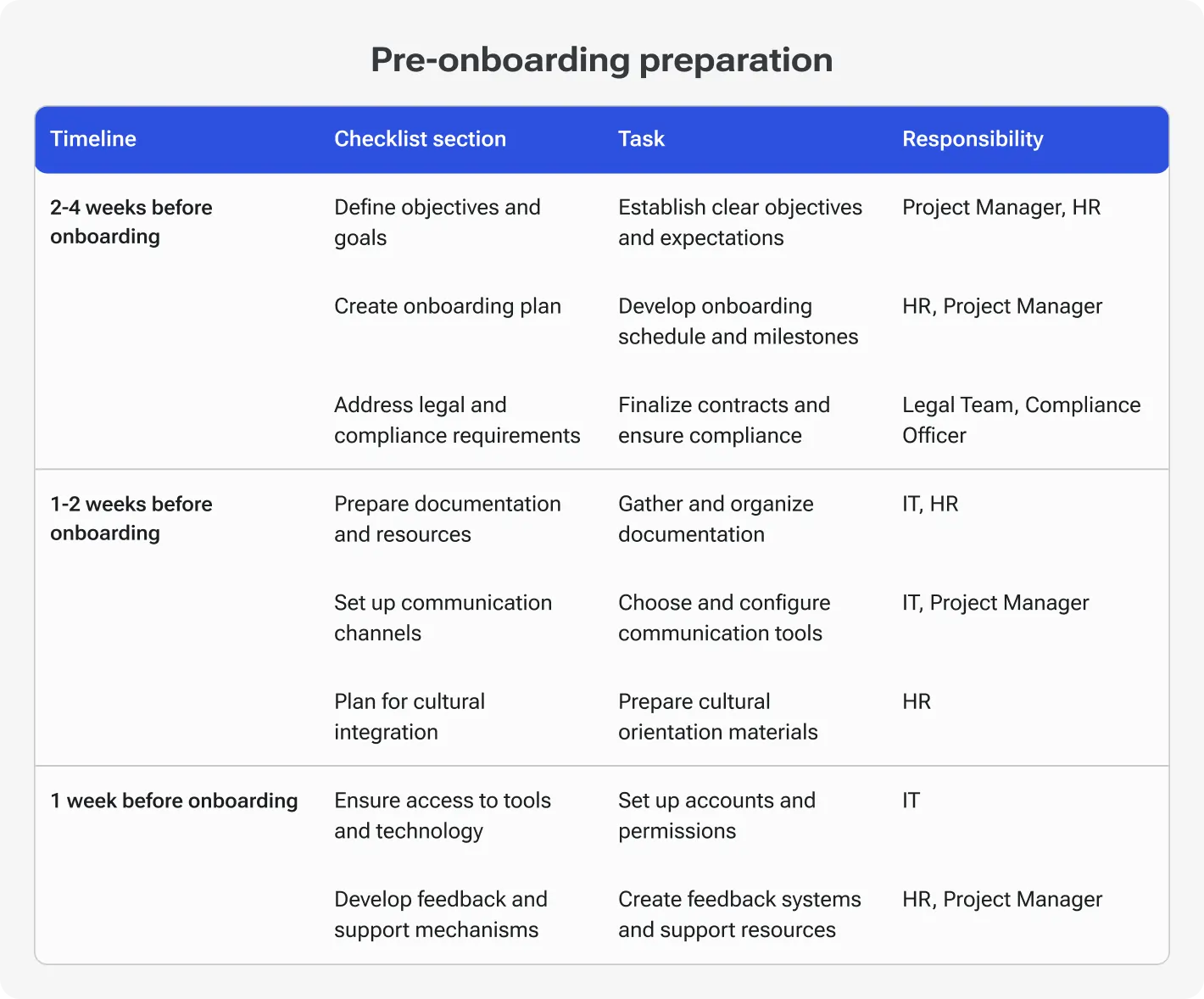
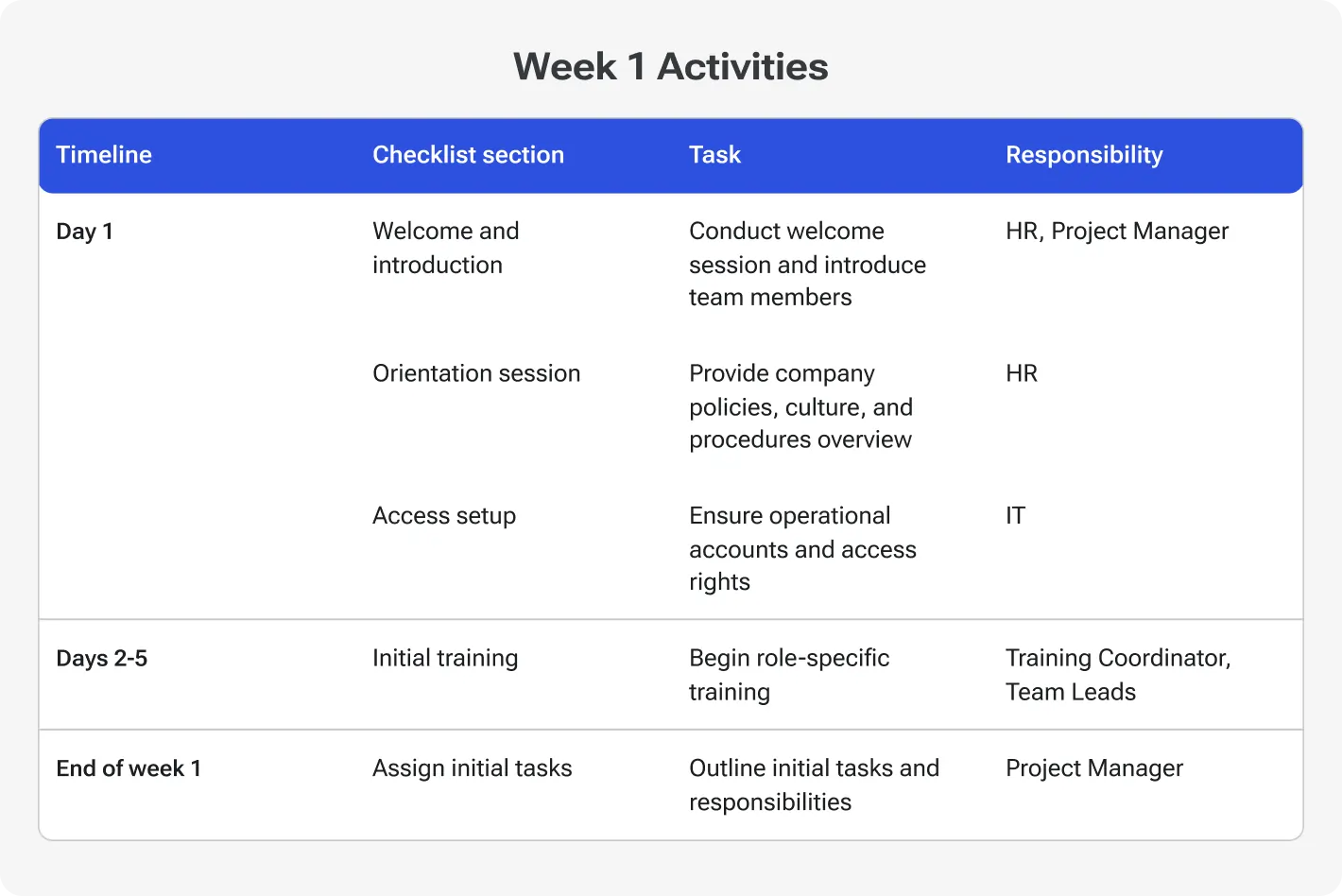
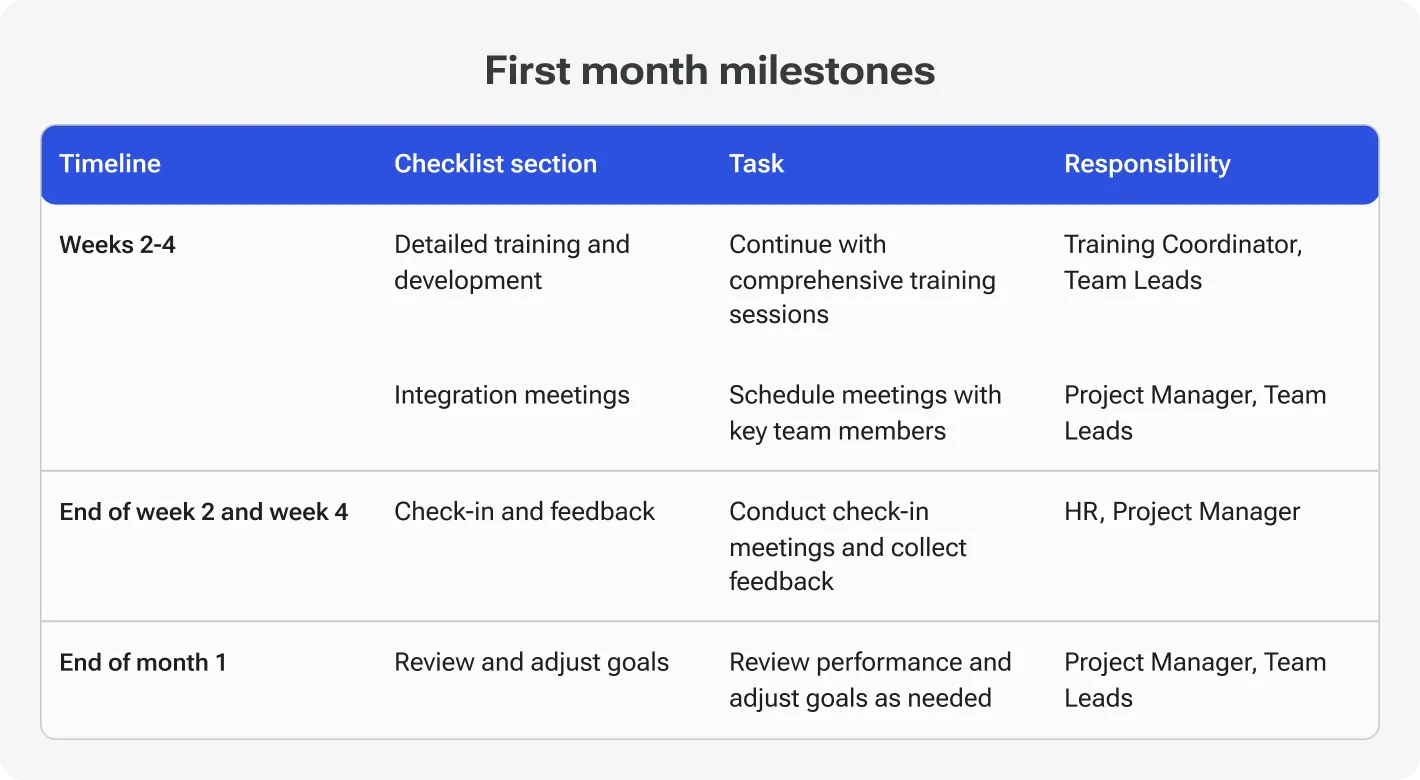
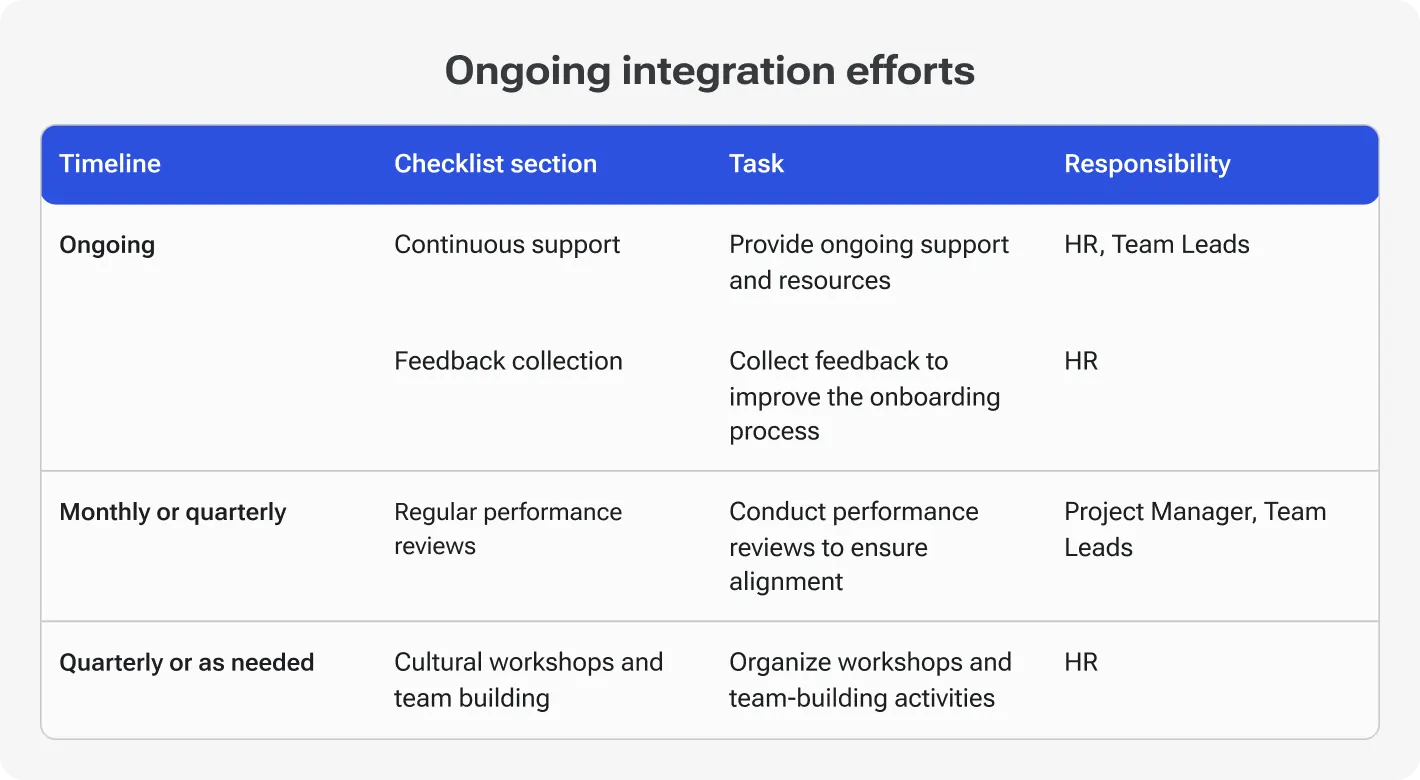
A clear and well-planned outsourced onboarding process is the key to a successful outsourcing partnership. It helps outsourced employees settle in faster, work better, and feel part of the team.
Onboarding isn’t something you do just once – it’s an ongoing effort to build a strong, lasting relationship. When you invest in onboarding, you set the stage for long-term success.
Key takeaways:
Plan ahead, set clear goals, and build a simple onboarding plan.
Keep communication open and set clear rules for collaboration.
Help outsourced employees understand your company culture.
Offer regular support and collect feedback to solve problems early.
Keep improving your onboarding process to make it more effective over time.
Ready to make outsourcing easier? We can help you build a smooth onboarding process and set up outsourced teams for success. Contact us today to see how we can support your goals.
Outsourcing to Czechia

Dec 2nd 25 - by Devico Team
Find out how much it costs to hire software developers in Czechia in 2025. Compare hourly rates, roles, and factors that impact pricing.
Outsourcing to Czechia

Nov 25th 25 - by Devico Team
Compare Czechia and Poland for software outsourcing in 2025. Discover costs, talent, infrastructure, and which country fits your project best.
Outsourcing to Czechia

Nov 18th 25 - by Devico Team
A complete guide to outsourcing software projects to Czechia, learn about costs, talent, benefits, and how to build successful partnerships in 2025.